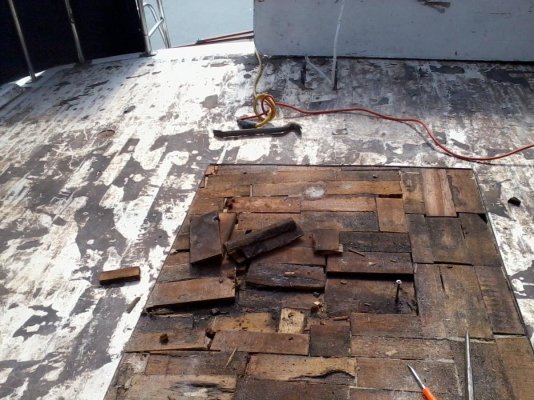Victoriana
Member
- Joined
- Mar 10, 2014
- Messages
- 24
- Location
- canada
- Vessel Name
- Victoriana
- Vessel Make
- Universal 36' Tri-Cabin
I have been searching for some information on this topic for quite some time and haven't had much luck. Maybe those of you have some experience with flybridge repairs can help me understand, what exactly the flybridge floor/core is made up of most commonly with Taiwanese trawlers. From what I have found the core is made up of a thick layer of fiberglass then wood scraps/plywood then a thin layer of fiber glass. 
Though on my Universal it appear as though the top layer is really just epoxy paint over top of plywood (which has led to moisture problems.)
Any help much appreciated!
Though on my Universal it appear as though the top layer is really just epoxy paint over top of plywood (which has led to moisture problems.)
Any help much appreciated!

